
Elder: planting, growing, pruning
Contents
Elderberry in a nutshell
- Elder is an easy-to-grow bush with rapid growth, reaching heights of 1.5 m to 4 m
- It blooms in spring with graceful pink or white umbels that have a sweet fragrance
- The flowers of black elder produce fruits that can be made into jams, syrups, and more
- Elders provide shelter for many beneficial insects and are a feast for birds and pollinators
- Horticultural varieties of elder showcase beautiful and unique foliage
- The flowers, leaves, and bark have medicinal properties
A word from our expert
Elder is an extraordinary shrub! Here’s something to surprise you: Sambucus, isn’t it that unruly and somewhat invasive bush that colonises the hedges of our countryside?
The new species of elder have retained the boldness and hardiness of the wild species: they are not fussy about soil and they do not require special care. However, they are less invasive… and that’s a good point!
Depending on the variety, elders offer a blurred or upright silhouette. The foliage competes in originality in terms of shapes and colours. Highly dissected (even feathery), they are decorative and display a wide variety of colours: variegated, green, golden, purple, almost black!
As a result, the elder can be a standout plant in the garden: the intense colours or the very decorative shape of the leaves can create an attractive focal point. It heralds spring with its magnificent young shoots, and its fragrant flowering gracefully accompanies it. It can also serve as a backdrop for a perennial border.
The elder meets all gardeners’ desires: it will create varied scenes in a hedge or a border according to many styles. It will appear natural in a wild hedge or at the back of a flowering meadow and will be more formal with its fastigiate varieties. It will compose a sophisticated scene with variegated, dark, or golden colours and bring a touch of exoticism with its laciniate leaves.
Description and botany
Botanical data
- Latin name Sambucus
- Family Adoxaceae (Caprifoliaceae)
- Common name elder, eldeberry
- Flowering spring or early summer (depending on the genus and variety)
- Height from 1.5 m to 6 m (up to 10 m for the wild variety)
- Exposure Sun or partial shade
- Soil type All
- Hardiness -25°C
Originating from Europe, elder or Sambucus is a bush that grows spontaneously in natural hedges and nitrogen-rich environments. It occupies fallow land and debris.
The genus Sambucus includes 3 main species:
- Sambucus nigra (black berries) is common throughout France, although it becomes rarer around the Mediterranean
- Sambucus racemosa (red berries, toxic when raw) which requires more moisture and coolness, populates the mountains up to 2000 m, in the north and east of France
- Sambucus ebulus (herbaceous elder). This toxic herbaceous elder colonises slopes and riverbanks thanks to its suckers.
Only Sambucus nigra and racemosa are used as ornamental bushes. The elder is a spreading bush, with a somewhat blurred silhouette and rapid growth. The speed at which it develops is a great advantage for new gardens: the elder resembles an adult bush after 5 to 6 years, quickly reaching heights of 3 to 7 m and widths of 2 to 4 m. It is the lenticels (irregularities, warts) and cracks in the bark that give it its patina.
It adapts to all types of drained soil, even calcareous, and thrives in sun or partial shade. It withstands temperatures down to -25°C.
The leaves are deciduous, opposite and odd-pinnate (composed of an odd number of leaflets). The ovate leaflets are more or less fine depending on the species. They are among the first leaves to appear in spring and are sought after by all sorts of insects, particularly moths that feed on them.
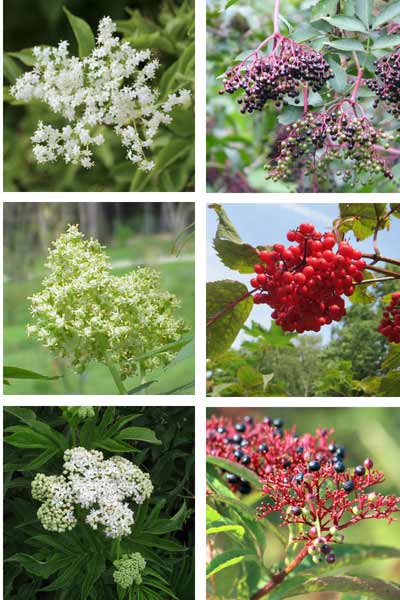
Elders, flowers and fruits, from top to bottom, Black elder (S. nigra), Red elder or “Clustered elder” (S. racemosa) and Herbaceous elder (S. ebulus)
The flowers of the Black elder, Sambucus nigra, consist of 5 stamens and 5 petals gathered in large corymbs, graceful and fragrant. They droop towards the ground at the end of summer, while in the case of the Herbaceous elder (S. ebulus), these flowers are upright towards the sky. In the case of the Red elder (S. racemosa) or “Clustered elder”, the petals of the flowers are fused and feature 5 stamens. They are grouped in an elongated and branched panicle.
The colour of the flowers varies; they are white or pink, depending on the species and variety. They appear in May-June, are melliferous and nectariferous, and delight pollinating insects.
The fruits appear at the end of summer in the form of lovely clusters of black berries for S. nigra and red for S. racemosa, and are edible when cooked. Beware, the fruits of the species racemosa are toxic when raw! For an orchard, one should choose the most productive fruit varieties such as Sambucus ‘Haschberg’ or ‘Korsor’. These fruits are also a treat for birds that disperse the seeds around.
The branches are fragile against the wind as they are light, hollow, and filled with white pith, making them brittle. In the garden, we recommend placing it in a location sheltered from strong winds.
For a natural garden, choosing an elder will always be wise. Sambucus plays a significant role in biodiversity. It serves as a hotel for insects by itself: it shelters all sorts of insects that feed on its flowers, leaves, fruits, and branches. Its hollow wood offers a refuge. Birds nibble on the fruits and nest safely among its dense foliage…
In both urban and rural settings, the elder is used in free hedges, at the back of flower beds, or to adorn slopes when in bush form. It can be planted alone, in sun or partial shade, accompanied by perennials and spring bulbs.
The smaller varieties can be grown in pots: their light and graceful silhouette will elegantly adorn a balcony or terrace.
Read also
When and how to dry elderflowers?Species and varieties
Only the nigra and racemosa species have produced beautiful horticultural varieties. Easy to grow, you can choose your elderberry from a wide range of sizes, shapes, and leaf colours.
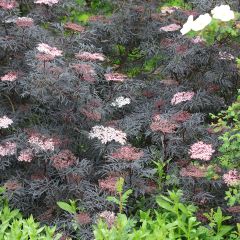
Sambucus nigra Black Lace - Black Elder
- Flowering time June, July
- Height at maturity 2,50 m
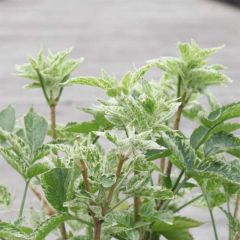
Sambucus nigra Pulverulenta - Black Elder
- Flowering time June, July
- Height at maturity 3 m
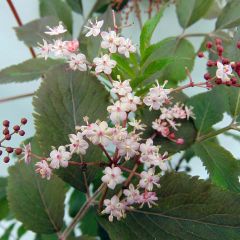
Sambucus nigra Thundercloud - Black Elder
- Flowering time June, July
- Height at maturity 4 m
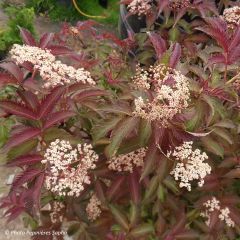
Sambucus nigra Serenade - Black Elder
- Flowering time June, July
- Height at maturity 2 m
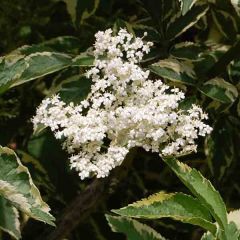
Sambucus nigra Madonna - Black Elder
- Flowering time June, July
- Height at maturity 2,50 m

Sambucus racemosa Lemony Lace - European Red Elder
- Flowering time April, May
- Height at maturity 1,50 m
Discover other Sambucus - Elder tree
View all →Available in 2 sizes
Available in 4 sizes
Available in 1 sizes
Available in 1 sizes
Available in 1 sizes
Available in 2 sizes
Available in 1 sizes
Available in 1 sizes
Available in 2 sizes
Available in 1 sizes
Planting elderberry
Where to plant my elderberry?
Elderberry can be planted in any soil, in non-burning sunlight or partial shade. It withstands the coldest winters (down to -25°C) and drought once established. It prefers cool situations, so in Mediterranean areas, place it in partial shade, protected from scorching sun. The soil is of little importance to it, although it has a preference for heavy or even clay soils.
When to plant?
October-November and March are the preferred months for planting, with a preference for autumn so that the bush has time to settle in before summer.
How to plant?
In the ground:
- To facilitate recovery, hydrate the root ball by placing it in a basin filled with water
- Dig a hole 2 to 3 times the size of the root ball
- Remove the elderberry from its pot and untangle the roots from the perimeter of the root ball
- Place the plant in the centre of the hole so that the top of the root ball (the collar) is level with the soil
- Add a mixture of garden soil and potting soil around the root ball to fill the hole, ensuring that the collar is not buried
- Firm down with your foot and water generously
- Mulch to prevent adventive plants
- Water once or twice a week for the first two summers
In a pot:
- Choose a pot with a diameter of 40 to 70 cm
- Spread a layer of drainage at the bottom (clay balls, gravel, broken terracotta)
- Fill with a mixture of potting soil and garden soil
- Water moderately: allow the substrate to dry out between waterings
Read also
How to make elderberry jam?Elderberry maintenance and pruning
Elder is a low-maintenance bush that does not require specific care. Potted specimens can receive an application of organic fertiliser in spring.
Pruning Elder
At the end of summer, prune the crossing branches that may injure each other by rubbing against one another. This will make your elder more harmonious. To encourage flowering, prune back old branches and cut young shoots back by a third.
If you prefer to shape it into a small tree, clear the base of the trunk. To do this, cut the lateral shoots at the base of the main branches. Also, remove the branches that grow inward to aerate the crown. This will promote light entry and make your bush more floriferous.
Every 3-4 years, elder can be cut back hard at the end of winter. This operation helps maintain a bushy shape, rejuvenates it, and keeps it contained. However, very short and too frequent prunings can exhaust it, and moisture that seeps into its pith eventually damages the bush.
Olivier explains it in detail in How to prune an elder or Sambucus for beautiful flowering?
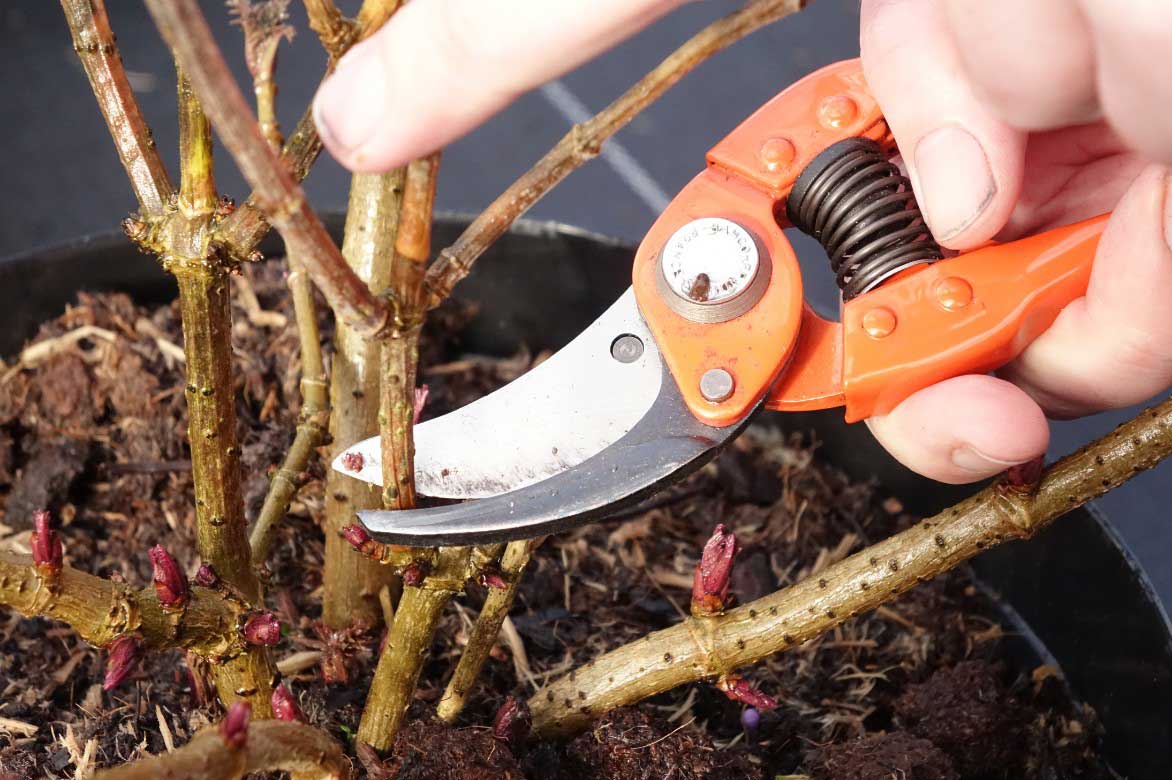
At the end of winter, you can cut back elder by pruning its branches quite short
Multiplication: sowing, propagation by cuttings
To propagate a elderberry, you can sow the harvested seeds, but the resulting plant may not necessarily conform to the variety from which the seeds were taken. If this is important to you, it is better to opt for propagation by cuttings. All varieties of elderberry can be propagated by cuttings.
Sowing
- Sow the seeds in place in autumn, so that the seeds undergo the effects of winter. Indeed, elderberry seeds require cold stratification to trigger their germination, which occurs in spring.
- Cover with a layer of seed compost equal to the diameter of the seed.
- Keep the substrate moist but not waterlogged.
Propagating an elderberry by cuttings
Elderberry is easily propagated by cuttings at the end of summer. Here is a method to follow:
- From August to September, take sections of current year’s stems with a heel of last year’s shoot, about 20 cm long, with at least three leaves,
- Remove the leaves from the base and cut the others in half if they are too large,
- Dip the heel of the cutting in rooting hormone powder,
- Plant the cuttings in a light, well-drained mix (half sand, half compost or special seed compost),
- Cover with a film, a plastic bag, or make a cloche using the top part of a bottle, for example, and let them root
- Once winter has passed, your cuttings should be rooted: transplant them into individual pots or directly into the ground.
Diseases and Pests
Elderberries are not very susceptible to diseases. However, aphids are their biggest enemy, especially since one species is specifically associated with them, Aphis sambuci L. Nevertheless, adult plants do not seem to be affected. Only young plants that are pruned too severely may suffer from this. In this case, a solution of black soap (20% black soap, 80% water) sprayed on the affected areas will gently eliminate the aphids (but be careful, hoverfly larvae, which are great predators of aphids, are also sensitive to this treatment!).
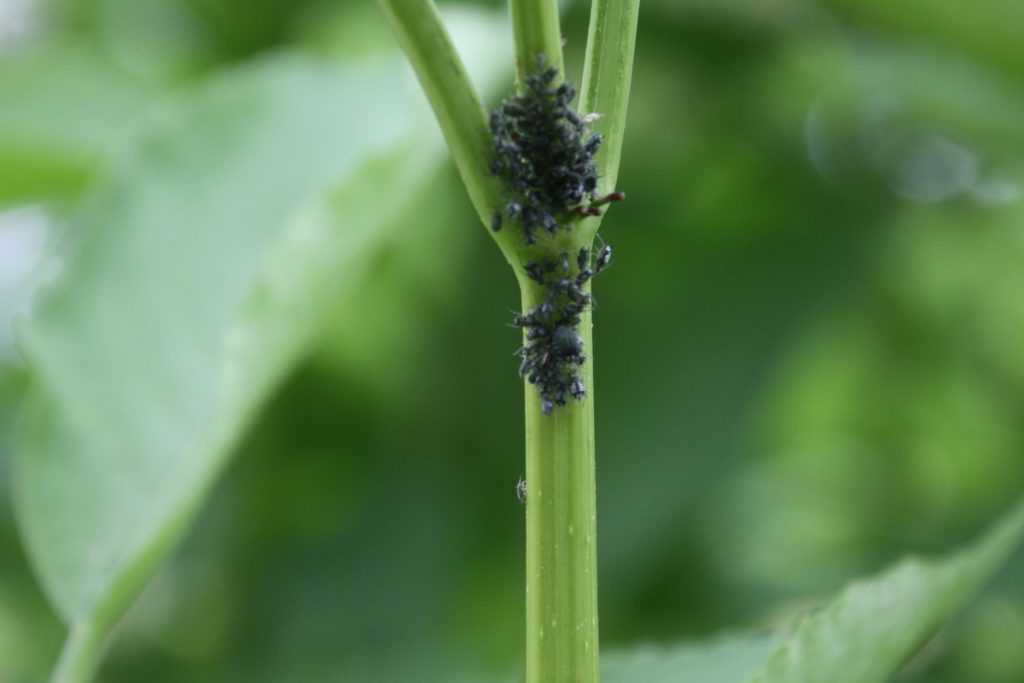
A colony of aphids on an elderberry
Associations
Elder can be associated with a very wide range of other bushes and perennials. Highly adaptable, they will easily find their place within hedges, fill the back of beds, or grace your terrace or balcony.
The great variety of foliage of elder provides stunning contrasts with Physocarpus or Berberis, both in shape and colour. At their feet, evergreen perennials like heucheras will contribute to the contrast with their wide array of colours.
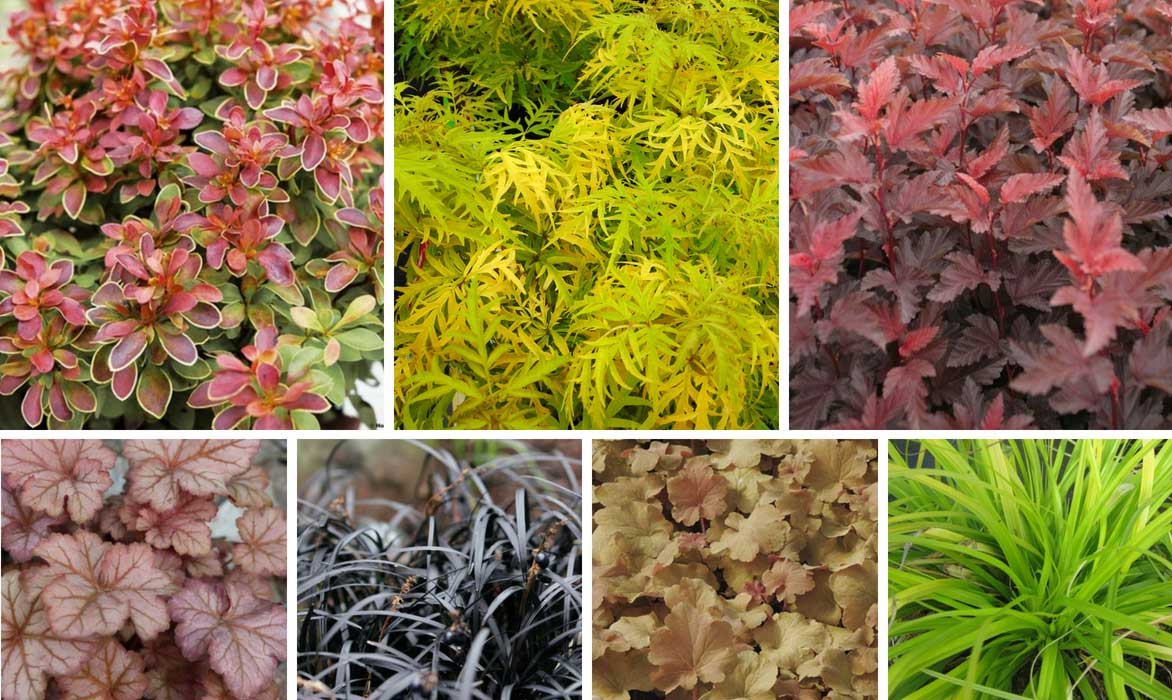
A colourful bed featuring Berberis thunbergii ‘Admiration’, Elder ‘Lemony Lace’, Physocarpus ‘Lady in Red’, and at their feet, Heuchera ‘Pinot Gris’, Black Ophiopogon, Heuchera ‘Caramel’, and Carex Everillo
Golden foliage (S. Lemony Lace, S. Sutherland Gold…), variegated (S. Madonna) also pairs well with yellow or orange Crocosmia and Japanese grasses (Hakonechloa macra); all can be tempered by columbines and blue campanulas.
For a pink and purple harmony in a bed, plant Sambucus nigra ‘Black Beauty’ with pink hellebores and purple heucheras at the base, a weigela, and hardy geraniums to accompany the flowering of the elder.
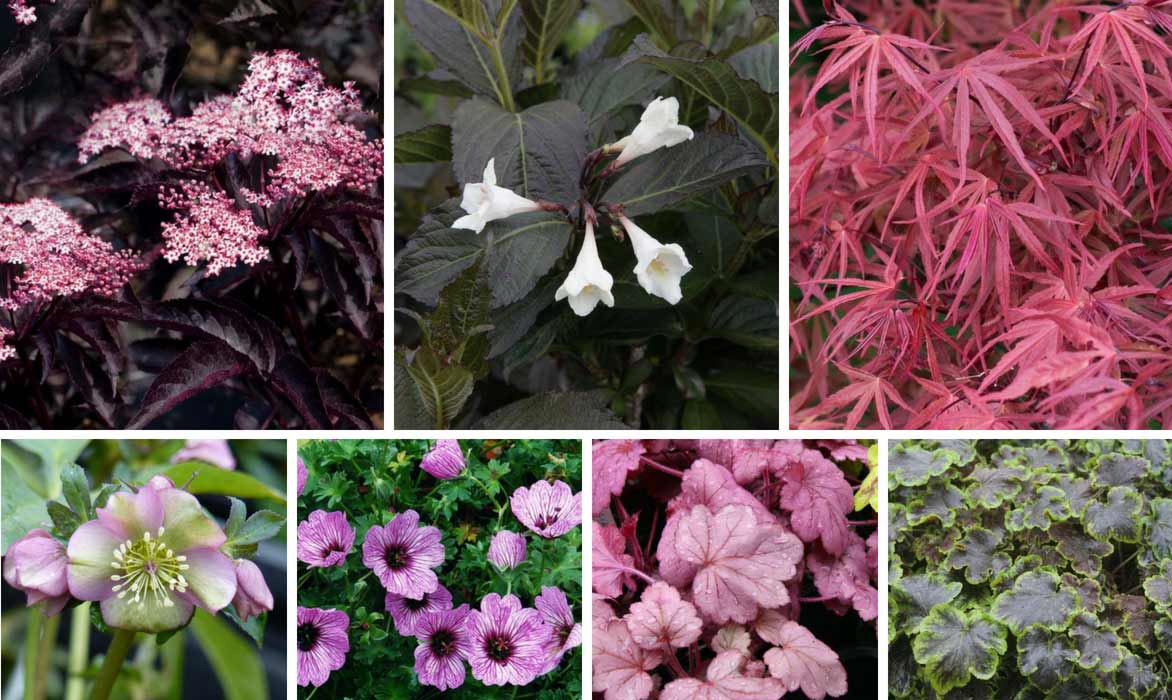
Another colour harmony with Elder ‘Black Beauty’, Weigela ‘Ebony and Ivory’, Japanese Maple ‘Red Pygmy’ accompanied by Abchasian Hellebore, Geranium cinereum ‘Ballerina’, Heuchera ‘Georgia Plum’, and Heucherella ‘Solar Eclipse’
Did you know?
Elder and Humans: Benefits, Virtues, and Uses of Elder.
In traditional pharmacopoeia, its bark, leaves, and flowers are used in herbal teas or decoctions.
Its name is thought to come from the Greek “sambukê,” which means flute or harp. Children can make whistles or blowpipes: simply remove the pith from a branch.
Wild-edible elder is the basis for many recipes: with the flowers, fritters, syrups, and wines are made, and with the fruits, tarts and jams…
→ Discover the recipe for elderflower fritters by Pascale in our tutorials!
You will find the elderflower lemonade recipe on the “Cueillir” association’s website and other easy and original recipes on the Cuisine Sauvage website.
Useful resources
Discover:
- Our wide range of elder trees
- Article: 4 repellent plants to keep moles away
- Our tutorials: When and how to dry elderflowers?, How to make elderberry jam?, How to make elderflower lemonade?; How to make elderberry granita?
- Our Blog article: The Black Elder ‘Black Tower’
- Subscribe!
- Contents
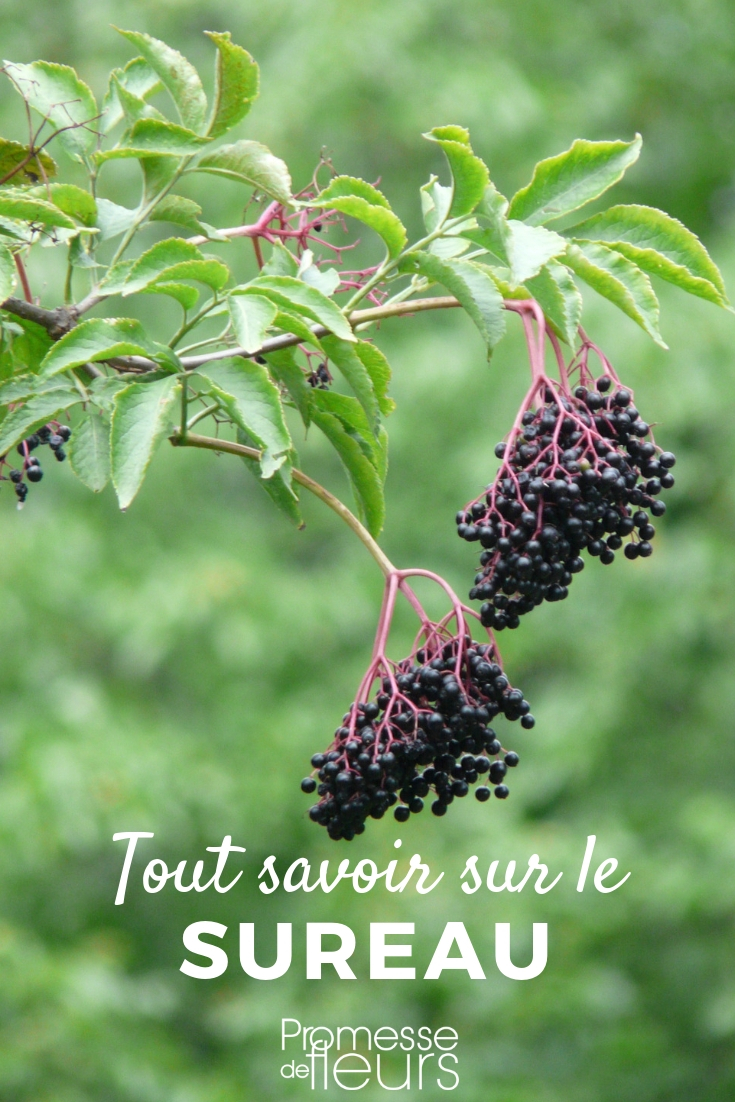






























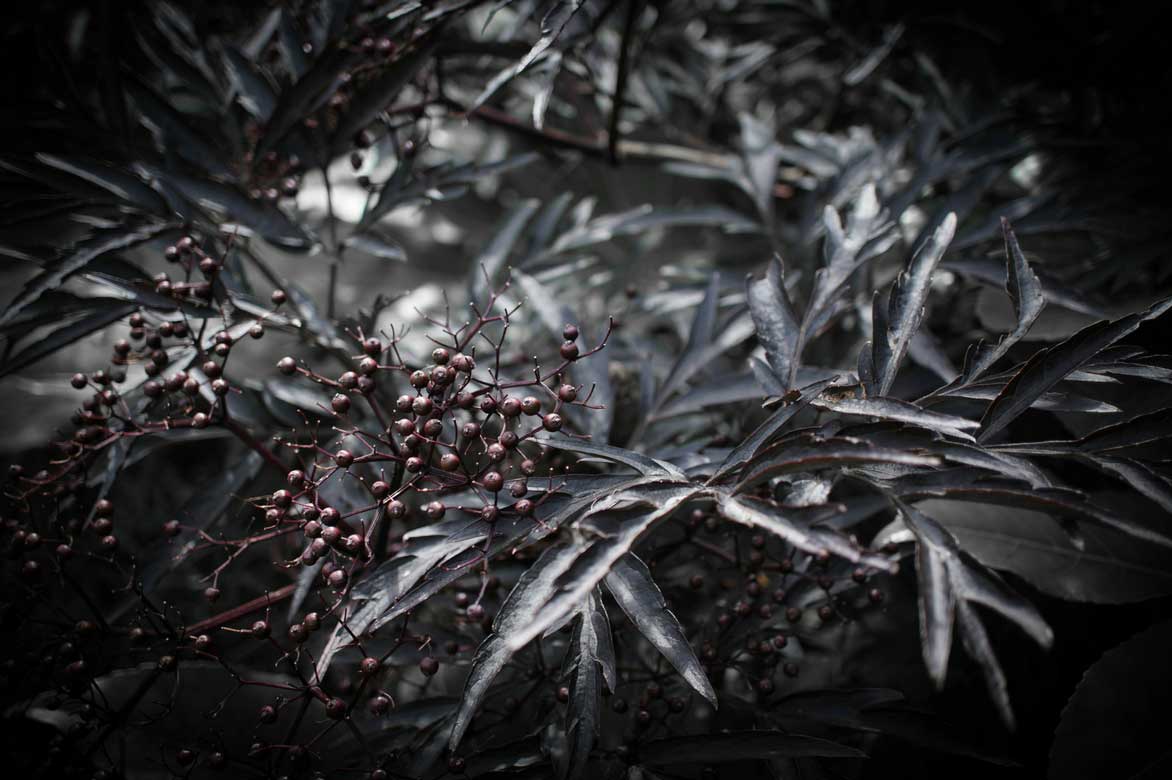



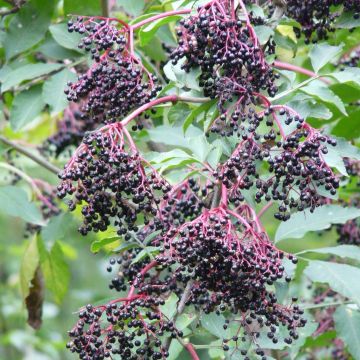
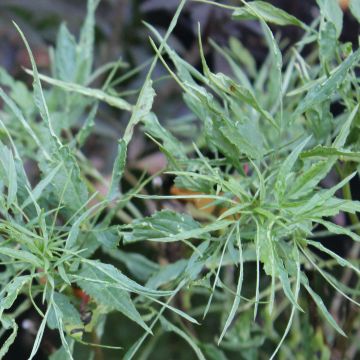
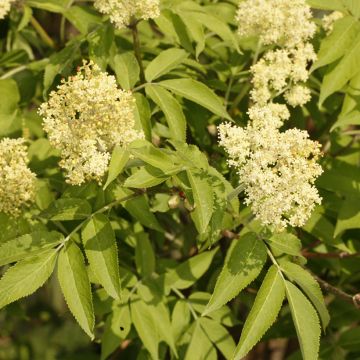
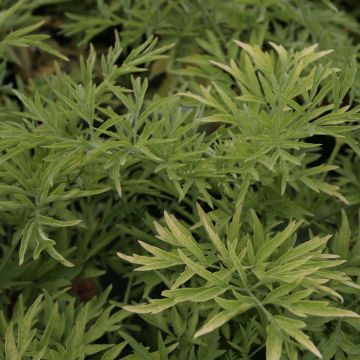
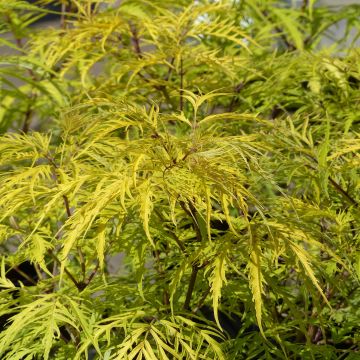
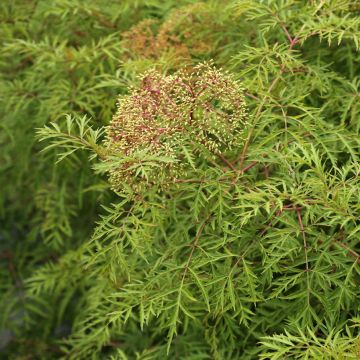

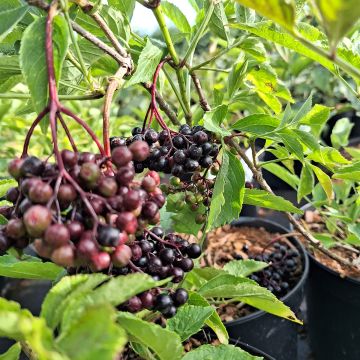
Comments